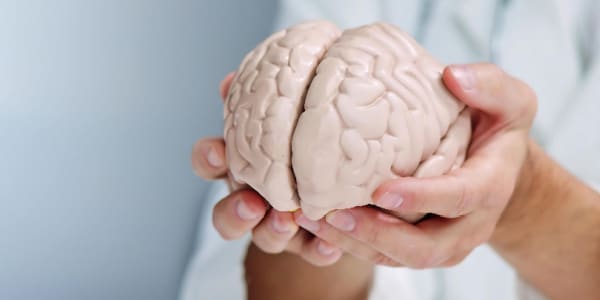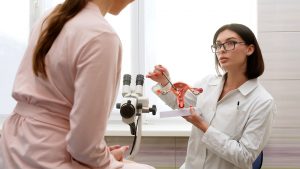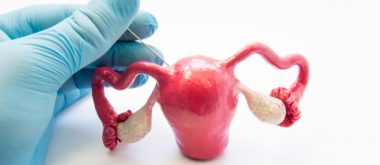Women who have gone through menopause may have more biomarkers in the brain called white matter hyperintensities than premenopausal women or men of the same age. White matter hyperintensities are tiny lesions that are visible on brain scans and are more common with increasing age or uncontrolled high blood pressure. These biomarkers in the brain have been linked in some studies to an increased risk of stroke, Alzheimer’s disease and cognitive decline.
The white matter of the brain increases in volume until around the age of 40 to 50. Then it shrinks again. Mental processing speed can suffer as a result of the loss of substance. Communication between different areas of the brain becomes less efficient. But younger women can also be affected. Current research shows that in women who have had their ovaries removed before the menopause, particularly before the age of 40, the integrity of the white matter in several brain regions is reduced in later life. White matter refers to the nerve fibers that connect neurons in different areas of the brain, and damage to the brain’s white matter does not necessarily lead to dementia or stroke, but it does increase the risk of them. The findings were published online in Alzheimer’s & Dementia: The Journal of the Alzheimer’s Association.
Removal of the Ovaries and the Risk of Dementia
According to Michelle Mielke, Ph.D., professor and chair of Epidemiology and Prevention at Wake Forest University School of Medicine, removal of both ovaries before natural menopause leads to abrupt endocrine dysfunction, which increases the risk of cognitive impairment and dementia. However, few neuroimaging studies have been conducted to better understand the underlying mechanisms. For the study, the research team examined data from the Mayo Clinic Study of Aging to identify women over the age of 50 who had available diffusion tensor imaging, a magnetic resonance imaging (MRI) technique used to measure white matter in the brain. The cohort consisted of:
22 participants who had a premenopausal bilateral oophorectomy (PBO) before the age of 40 years
43 participants who had PBO between the ages of 40 and 45
39 participants who had PBO between the ages of 46 and 49
907 participants who did not have a PBO before the age of 50.
Women who had a premenopausal bilateral oophorectomy before age 40 had significantly reduced white matter integrity in several brain regions. There were also trends in some brain regions such that women who had a PBO between 40 and 44 or 45 and 49 years of age also had reduced white matter integrity, but many of these findings were not statistically significant.
The researchers point out that 80% of the participants who had had their ovaries removed also had a history of estrogen replacement therapy. The study was therefore unable to determine whether the use of estrogen replacement therapy after oophorectomy mitigated the effects of oophorectomy on white matter integrity. She noted that the ovaries secrete hormones before (mainly estrogen, progesterone and testosterone) and after menopause (mainly testosterone and androstenedione), and removal of both ovaries leads to an abrupt decrease in estrogen and testosterone in women. Therefore, one possible explanation for the results is the loss of estrogen and testosterone. However, further research is needed to better understand how changes in white matter are associated with cognitive impairment.






